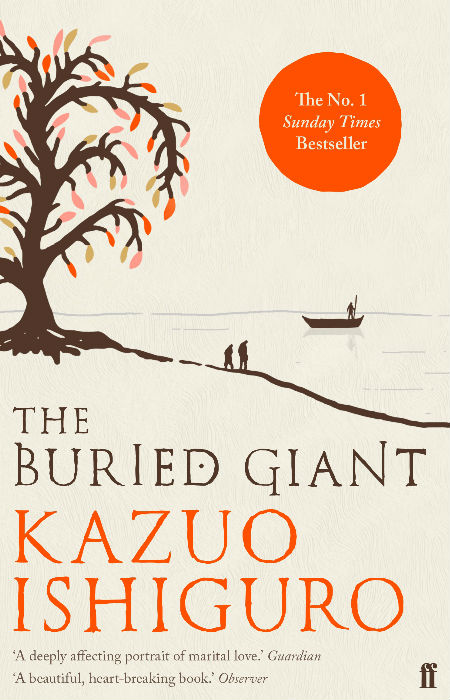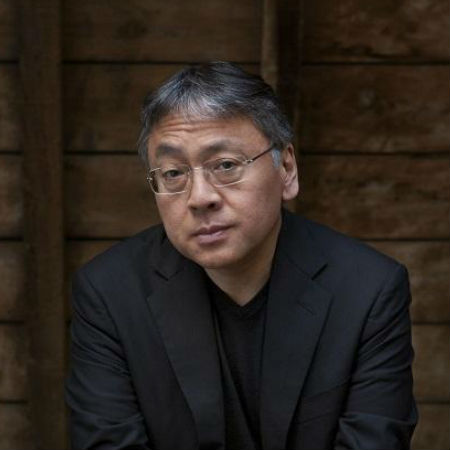
Who are we without our memories?
Are we better off? Diminished markedly or does our present state of being and our innate sense of self make up for any perceived deficiency caused by the loss of an lifetime’s worth of accrued experiences?
It’s a weighty question indeed but it is one that is explored with studied ease in Kazuo’s Ishiguro’s beautful novel The Buried Giant which explores in ways intense and ruminative what it is like to have the prologue to your present stripped bare or present only in half-recalled snatches and snippets.
Set in Britain in the fifth or sixth century AD when the Romans have departed long enough for their well-oiled imprint of civilisation to rust, decay and grind to a halt, and the Saxons have invaded from northern mainland Europe (Germany/Denmark), The Buried Giant takes place in a world ruled as much as by superstition and folklore as it is by entrenched knowledge of the world.
Britain at this time is at peace, at least in Kazuo’s version of it, with Saxons and Britons living in relative peace and harmony, the result of a truce brokered by King Arthur who sought to break the cycle of usurpation and violent invasion that had hitherto marked post-Roman England.
“In the days before their journey’s start, Beatrice had grown increasingly confident of remembering their route, at least as far as the Saxon village which she had regularly visited with the other women over the years. But once they lost sight of the craggy hills above their settlement, and had crossed the valley beyond the marshland, she became less certain. At a fork in a path, or facing a windswept field, she would pause and stand for a long time, panic creeping into her gaze as she surveyed the land.” (P. 31)
In Ishiguro’s Britain of the time, King Arthur is real though long since dead, with only one of his knights Sir Gawain and his faithful steed Horace left to carry on Arthur’s noble, though violently-enacted peace. (Many conversations in The Buried Giant point to the idea that as an architect of peace, Arthur was profoundly good at waging war and killing innocents; in other words, wonderful end, debatable means.)
In a nod to the magical realism that many people of the age took to be gospel – not an accidental turn of the phrase; Britons were overwhelmingly Christian while the Saxons were pagan – ogres roam the land and terrorise and kill at will, giants lie buried beneath hills (hence the title) where they might be awakened by footfalls overhead, sprites seek to enslave and steal people, goblins make mischief and dragons fly still, though in much reduced numbers, such that their reputation is far worse than their actual bite.
It’s a world of fear and rumour, and a mysterious “mist of forgetfulness” which causes people to forget both long-held memories, and newly-created ones, and even to fail to recall the existence of friends, relatives and fellow village inhabitants.
Axl and Beatrice, who live in a Hobbit-like Briton village carved deep into the hillside, are as afflicted by this as anyone else but rest with surety in the fact that they love each other, deeply and substantially and while they both muse, in the lyrically-cadent speech that imbues all of the dialogue in The Buried Giant with a gorgeous poetic sheen, about whether there are incidents in their shared forgotten past that might imperil their present love, they return again and again to their surety of the present.

Yet something still niggles at their cosy contentment, and they eventually leave their village, which is controlled by a pastor with gently-worded though strongly-enforced theocratic government, in search of their son who, they hazily recall, lives some days journey hence.
What is supposed to be a reasonably safe, uneventful family reunion, soon becomes anything but as they encounter a monastery in foment, villages in disarray, a Saxon warrior named Wistan with agendas innumerable and fearsome fighting ability and a young man name Edwin who is kidnapped by ogres, bitten by a dragon and may be on his way to a future as a warrior or a cursed existence as a dragon’s mate.
It is, you’ll agree fiercely and engagingly imaginative and Ishiguro makes the most of his adventurous narrative, which pivots as much on humanity’s propensity to exhibit the worst of itself as it does on questions on whether memory, or the lack thereof, can ameliorate, or perhaps even erase, this ever-present darkness of intent and deed.
Told in a gently rolling, almost The Canterbury Tales-style that feels jovial and sing-songy even threats abound and potential horrors lie around each corner, The Buried Giant is a remarkable achievement, managing to be both darkly real and historical accurate as it is magically real and almost whimsical at times.
“‘I don’t know if it’s a thing dreamt or remembered. But I saw myself just then, standing in our chamber in the dead of night. It was long ago and I had tight around me that cloak of badger hides you made once as a tender gift to me. I was standing like that, and in our former chamber too, not the one we have now, for the wall had branches of beech crossing left to right, and I was watching a caterpillar crawling slowly along it, and asking why a caterpillar wouldn’t be asleep so late at night.'” (P. 258)
What emerges again and again is the power that memories have to shape us and thus society as a whole.
While Axl and Beatrice are unsettled by their lack of recall of past events and of the shards of memory that come in unbidden at the oddest of times, they are also accepting of the fact that the present is all they’ve got, an accommodation that becomes increasingly untenable as it becomes clear that much more lies in the shadows of the forgotten that they have accounted for.
As the story reaches an invigorating but again softly told climax that stays true to its unhurried percolating style, the destinies of Axl and Beatrice, Wistan and Edwin, Sir Gawain and indeed all the peoples of Britain, both Briton and Saxon, become deeply and profoundly intertwined, taking the smaller story of two people simply in search of their son into something far broader, deeper and emotionally evocative.
The Buried Giant is a thing of literary beauty that manages to be brutally honest about human nature and the lengths that must be taken to curb the worst of its articulation, and poetically transcendant, a tale told in tones that suggest in ways immersive and near-tangible the very peace that underpins life at that point and which might be slipping away, endangering everyone.
The central questions throughout pivot time and again on memory and whether the act of forgetting, whoever is behind its institution and its possible removal, is enough to rein the darker, more violent angels of our nature, and the more sullied parts of our lives, or whether we are doomed to repeat our past misdeeds, no matter how truly and implacably we declare our adherence to love, peace and the very best of what we can be.